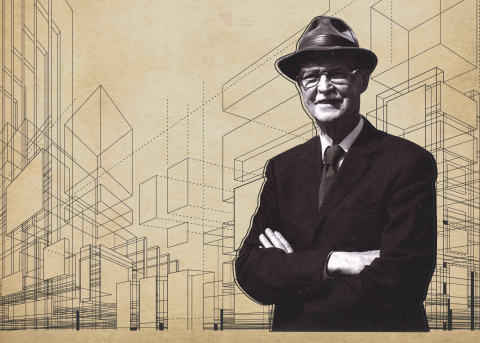The Architectural Influence of James Gamble Rogers II in Winter Park

A Conversation with Jack Rogers
By Jody Lazar, Director of Community Engagement
April 28, 2023
Architecture has the power to shape our physical and emotional experience of the world around us. It can inspire us, comfort us, and even challenge us. As Pulitzer Prize-winning architecture critic Paul Goldberger writes in his book Why Architecture Matters, "the best architecture can make us feel alive." In recognition of Preservation Month, we are taking a closer look at the work of one architect who left a lasting impact on Winter Park: James Gamble Rogers II.
Rogers' attention to detail, materials, and craftsmanship makes many of his designs works of art. For example, in an effort to make his buildings appear timeworn, as though they had stood for years, Rogers often employed secondhand materials, a practice that today would earn him the label of "green" architect. Winter Park, Florida, was a small town, and Gamble Rogers was its prized architect. He completed more than 60 residential designs before World War II, and described this period as "The most fun I ever had practicing architecture. I could take time to get it just the way I wanted." His library and selected drawings for 50 of his residential commissions are archived at the Winter Park Library.
Rogers' impact on the community went beyond the buildings he designed. Because of their contextual nature, the buildings became part of the larger community rather than serving as individual, detached objects within the landscape. The result was that people recognized the intangible value these buildings gave to the built environment: scale, style, and grace. As his own work illustrates, Rogers was correct when he told an interviewer that a good design is timeless.
One of Jack’s favorite Gamble Rogers' stories is associated with the Barbour House. During the restoration, the team was continually amazed at the quality of detail, materials and craftsmanship. In 2002 a piece of window trim was removed and on the back was written in pencil "built by J. N. Chestnut, Daytona Beach, Florida, February 24, 1933." The "workmen" took so much pride in their efforts that they "signed" their work.
In conclusion, architecture matters because it has the ability to shape our world, and the work of James Gamble Rogers II in Winter Park is a testament to that power. Rogers' attention to detail and craftsmanship, his use of secondhand materials, and his ability to create buildings that felt timeless and integrated into the larger community, all serve as examples of why architecture matters. As Goldberger writes, "Architecture can give us a sense of place and a sense of delight, a sense of meaning and a sense of wonder."
Learn more at the Library
- Want to hear more? Register for our event celebrating the life and work of James Gamble Rogers II : Why Architecture Matters on May 4th.
- Visit the Gamble Rogers II exhibit until May 9th presented by Casa Feliz in our display case next to the Edyth Bush Theatre on the first floor.
- Browse through our digital collection of Winter Park's Historic Homes, many designed by Rogers.
Books to checkout:
Why Architecture Matters by Paul Goldberger
The Architecture of James Gamble Rogers II in Winter Park, Florida by Patrick W McClane